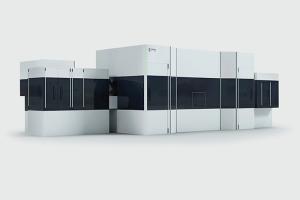Building automation moves to next level
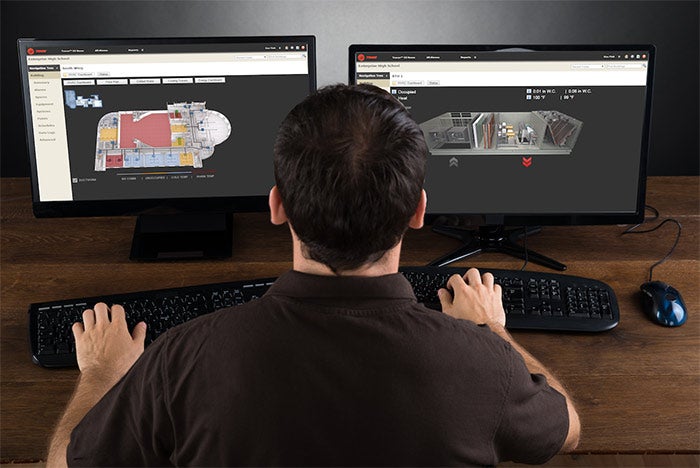
The latest advances in building automation systems (BAS) embrace the movement toward the Internet of Things (IoT), the internetworking of physical devices — embedded with electronics, software, sensors, actuators and network connectivity — that enables these objects to collect and exchange data. Manufacturers that supply the nation’s hospitals agree that this trend will improve building performance as it continues to evolve.
You may also like |
| Controlling health facility energy consumption |
| Smarter integration of building controls |
| Aligning hospital operations through building automation |
|
|
More hospitals are using smart building solutions to improve their operations and patient care, such as giving personnel access to critical building information via mobile devices.
“Equipment, such as IV pumps, respirators and wheelchairs, are becoming smarter and more connected. Integrating these devices into BAS allows hospitals to more effectively manage their assets and track where those resources are,” says Tracy Coppola, health care consultant, Honeywell Building Solutions, Morris Plains, N.J.
IoT innovations
“New software platforms for including our BAS workstations are designed to be part of an entire IoT ecosystem. This ecosystem allows the acquisition of building performance data and the creation of actionable information to improve performance,” says Darcy Otis, director, analytics and fault detection, Siemens Industry Inc.'s building technologies division, Buffalo Grove, Ill.
All of Trane’s BAS are IoT-enabled, according to Gene Shedivy, BAS product leader, Trane, Davidson, N.C. The company offers cloud-based, device-level connectivity via its Tracer SC controls as a gateway — both on Trane equipment and other manufacturers’ equipment.
One exciting aspect of IoT is the merging of information technology (IT) and operational technology (OT), says Warren Rosebraugh, director and health care solution architect, Schneider Electric, Andover, Mass. “As more and more building systems become cloud-based, the partnership between facilities and IT personnel will continue to grow in importance.
“In the past, OT systems largely acted independently of their IT counterparts,” Rosebraugh continues. “What we see now is a rapid switch to a convergence of building systems including HVAC, lighting, energy management and security into a centralized hub — providing facility personnel with more intelligent building data than ever before.”
Kevin Callahan, product owner and evangelist for Alerton, Lynwood, Wash., a Honeywell business specializing in BAS, uses the term "the Internet of Systems (IoS)" instead of IoT. “When we talk about IoS, we are talking about cloud computing and collecting the massive amounts of data from all of the systems in a facility.
“It’s not about integrating dissimilar systems, but coordinating all of the dissimilar systems so that they are operating in unison,” he continues. “For example, you want the HVAC system, the lighting system and the security/access system to be coordinated so that all three act and operate together to provide comfort and safety for all occupants.”
Possible platforms
New BAS incorporate features that make IoT a reality. For example, Honeywell’s latest release of the Enterprise Buildings Integrator (EBI) R500 leverages the connectivity of buildings to help make them strategic assets to the organization. New EBI features enable facilities managers to more easily turn building data into actionable insights to deliver outcomes in real time.
The EBI R500 features an open platform capable of communicating with industry-leading protocols such as BACNet, OPC and LonWorks. This enables large hospital enterprises to easily integrate multiple facilities without having to replace existing systems. It also gives hospitals greater flexibility in scaling their BAS to suit the organization’s growth.
Honeywell also offers Command & Control Suite (CCS), a smart building technology that integrates with BAS such as EBI to turn complex facility data into recommendations and easy-to-implement changes that lower costs, minimize risk and reduce downtime.
“When it comes to BAS, having a simple, intuitive graphical interface is paramount,” says Larry Bacher, northwest region manager, Automated Logic Corp., Kennesaw, Ga. The company’s WebCTRL provides this through an open architecture with enhanced visualization, which provides a comprehensive look into what is happening throughout a hospital. Features include thermographic displays; an environmental index that measures indoor air quality and patient comfort; fault-detection diagnostics; and time lapse, which shows past system operations graphically.
Johnson Controls has introduced Metasys 8.0 BAS, which builds upon features introduced with Version 7.0. Key enhancements include graphics available across multiple mobile devices, alarm prioritization for better productivity, and improved scheduling and custom trending that can save time and facilitate troubleshooting. In addition, new reporting features make it easier to access trends, alarms, audits and scheduling data.
As a result of these improvements, building operators are able to do more from anywhere, with any device, the company reports. They can drill down to critical information more quickly.
Siemens has introduced a workstation called the Desigo CC building management station. Its open platform facilitates the creation of applications and dashboards. It also allows for integration with multiple building systems (southbound integration) as well as to-and-from other software platforms (northbound integration).
“With Siemens' room automation station DXR (BACnet) product, we are able to integrate key hospital functions such as room comfort, room lighting and room shades into one integrated platform. We’ve also unveiled a fault-detection and diagnostics services platform,” Otis says.
Ascent Compass software from Alerton is designed to help hospitals manage their HVAC energy consumption while maintaining a comfortable indoor environment. The company recently introduced Compass Version 1.5 that features a single-user interface for managing all alarms in a building. Coming soon is a reporting feature that simplifies report generation to help meet the requirements of entities such as the Joint Commission, the company reports.
Energy savers
Continuing advances in BAS have improved hospital energy management, experts agree. “We continue to see advances in BAS control theory and reliability. Some applications for central chilled water and critical environment control are saving 20 to 30 percent in energy. We’re also seeing the application of energy analytics to continuously monitor building energy performance,” Otis says.
In addition, hospitals are now integrating power management software natively with their BAS to gain a single view of HVAC, energy, power distribution, network health and power quality. “This integration takes monitoring critical areas of the hospital, such as an operating room, to a whole new level,” Rosebraugh says.
Data collection is another important capability. Using BAS to collect data is important because it helps hospital facilities managers to understand how their HVAC equipment and building systems are operating and using energy. However, collecting data is the easy part.
“Today, it’s all about what hospitals do with the data — how they analyze it to make proactive decisions. Hospitals can use the data to increase uptime of systems, decrease turnaround times in operating rooms, and find ways to improve comfort and efficiency,” Shedivy says.
Also, data can be used to simplify regulatory compliance. Providing key maintenance and alarm information to a computerized maintenance management system is an asset when preparing for an inspection by a regulatory body, as it allows facilities managers to demonstrate that they are organized and proactive. “This integration helps to bulletproof processes and ensures they are being completed according to regulatory requirements,” Rosebraugh notes.
BAS technology has the ability to capture facility data through alarm management and dashboards. However, most hospital manpower is focused on making needed building infrastructure improvements, leaving little time to review operating data to identify opportunities for improvement, according to Coppola. “Facilities mangers still need to review and analyze the data. They need to know how to use the information to improve day-to-day operations,” she says.
IT challenges
By their very nature, hospitals pose challenges to manufacturers of BAS. Among the issues impacting BAS in today’s hospitals is cybersecurity and the need to protect critical building and patient data. Hospitals must invest in modern technology and building controls that have the memory and horsepower to support encryption.
In addition, hospital administrators are increasingly concerned with HCAHPS survey results, as reimbursements from the federal government are adjusted based on patient satisfaction ratings. With room comfort being a top issue cited in HCAHPS responses, facilities managers need to invest in BAS that allow patients to change temperature set points without staff intervention.
Another major issue that health care facilities face is support for BAS, according to Bacher. This is because many hospitals are understaffed and need a source of qualified professionals to run complex BAS. One key factor is lack of training.
“Due to turnover, new technology and ever-present, cost-reduction measures, many staff members are not able to utilize the power within their BAS,” Bacher explains. “This lack of knowledge affects the facility in two ways: manually overriding the system, which causes inefficiencies; and more time spent looking after systems that have been overridden. This lost time could have been spent learning the system in the first place.”
IT departments have become a huge part of BAS in hospitals. “Unfortunately, IT technicians and BAS technicians don’t always speak the same language. This becomes problematic when IT makes changes to their infrastructure, such as routers, switches and IP addresses. This can wreak havoc on BAS that have been functioning within the facility for years,” he adds.
The latest BAS also can improve operations at off-site health care facilities, which is a growing trend. While these facilities may be smaller and may not operate on a 24/7 basis, monitoring and controlling temperature, humidity levels and infection control is still critical, experts agree.
“The web accessibility, integrated dashboards and graphics available in BAS technology today support the operation of multiple facilities. An owner or operator can look at facilities even when they are hundreds of miles apart. They can actually see all of their facilities at once, and then drill down into specifics as needed,” Shedivy says.
Trane offers scalable BAS that provide the ability to integrate smaller-scale systems with larger ones. For example, Trane's Tracer Concierge can be used in smaller facilities and link to a larger hospital system for centralized management.
The Trane Tracer Ensemble provides an enterprisewide view into BAS of multiple buildings. A customizable interface lets managers navigate through all levels of their facility from building, room or piece of equipment, enabling them to view the status of a facility or to quickly change set points or schedules. Built-in reporting tools display all system data, so managers can measure and compare building operation across assets and time periods to monitor performance.
Continuing evolution
As for future BAS advances in health care facilities, wireless technology will continue to evolve, experts agree. “Various wireless options exist today, including (should this be U.S. Cellular or is it a generic lowercase cellular?) Cellular, Wi-Fi and ZigBee. Trane Air-Fi wireless communication uses ZBA's ZigBee technology, which allows for easy connection or relocation of BAS devices in the building to adapt to changes in usage,” Shedivy notes.
Moving into cloud computing, the future holds the possibility of BAS taking actionable data presented to a facilities manager and turning it into automated responses, according to Callahan. “Today, the data collected for analysis and fault detection diagnostics can only be presented as actionable data requiring a human to understand and take necessary action,” he notes. “The future may not require this human interaction; the system may take action for you [through] artificial intelligence.”
Neal Lorenzi is a freelance writer based in Mundelein, Ill.

Tying it together
The Ascent building automation system enables control of multiple building systems, including HVAC, lighting and others. Alerton www.alerton.com
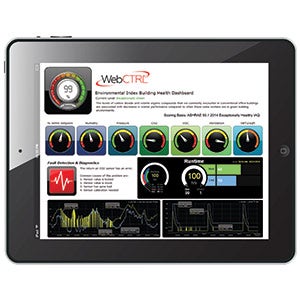
Dashboard details
WebCTRL’s advance monitoring provides data critical to maintaining sustainable building operations. Automated Logic www.automatedlogic.com

Navigating the system
Using Command Wall’s intuitive, map-based touch-screen visualization systems, users can the access enterprisewide view and zoom into specific areas to quickly understand and react to issues and opportunities as they arise. Honeywell Building Solutions www.buildingsolutions.honeywell.com
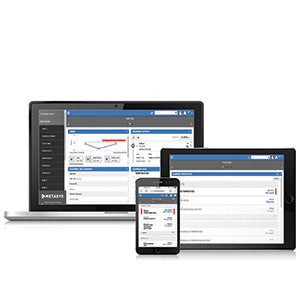
Open access
The Metasys 8.0 building automation system offers a new reporting feature for easier to access trends, alarms, audits and scheduling data. Johnson Controls www.johnsoncontrols.com
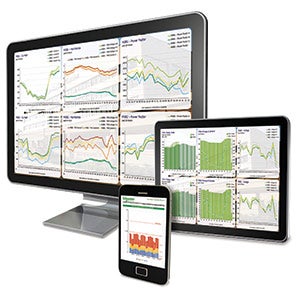
Optimized effort
The StruxureWare for Healthcare solution brings together a unique set of applications to provide health care facilities with visibility and access to critical building data so they can maximize efficiency and business performance. Schneider Electric www.schneider-electric.com
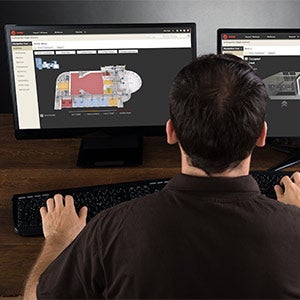
Command central
The ability to gain centralized control of multiple systems and zones in a building is possible with Tracer, saving time and making hospital facilities operations easier and more efficient. Trane, North Americawww.trane.com



